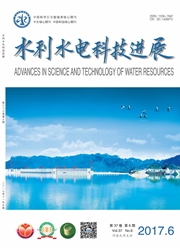

 中文摘要:
中文摘要:
为研究浮石轻骨料混凝土作为渠道衬砌材料的可行性,采用天然浮石、砂、水泥、水以及工业废料粉煤灰制作浮石轻骨料混凝土渠道衬砌板,与无衬砌渠道及普通混凝土衬砌渠道进行渠床基土温度的比较;同时,利用图像处理软件对比分析普通混凝土截面与浮石轻骨料混凝土截面的形貌特征。结果表明:浮石轻骨料混凝土衬砌可以有效减缓基土与外界的热交换速度,使基土在整个冻结期温度变化缓慢,基土冻结延迟或不发生冻结;在引气剂用量相同的情况下,浮石轻骨料混凝土可见封闭孔的数量在整个截面所占面积比例远大于普通骨料混凝土。
 英文摘要:
英文摘要:
In order to investigate the feasibility of using pumice lightweight aggregate concrete as channel lining material, a canal lining board of pumice lightweight aggregate concrete was produced using natural pumice, sand, cement, water, and industrial waste fly ash. The foundation soil temperatures of an unlined canal, a normal concrete-lined canal, and a pumice lightweight aggregate concrete-lined canal were compared. Meanwhile, the morphology characteristics of the normal concrete cross-section and the pumice lightweight aggregate concrete cross-section were compared using image-processing software . The results indicate that the pumice lightweight aggregate concrete lining can effectively slow down the rate of heat exchange between the foundation soil and surrounding environment, inducing that the foundation soil temperature changes slowly throughout the freezing period and foundation soil congelation delays or does not occur. The proportion of the area of visible closed holes of pumice lightweight aggregate concrete to the whole cross-section area is far greater than that of normal concrete in the case of the same amount of air-entraining agent.
 同期刊论文项目
同期刊论文项目
 同项目期刊论文
同项目期刊论文
 期刊信息
期刊信息
